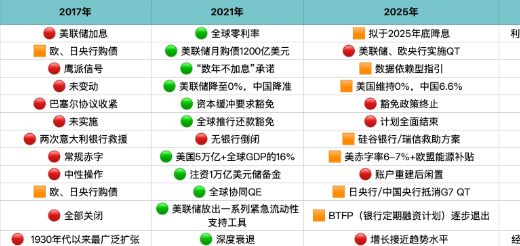I. Industry Risk Analysis
(1) Policy Risk
The early education center industry faces compliance risks due to the tightening implementation of policies. Education departments across the country continue to strengthen qualification reviews and operational supervision. Entrepreneurs are prone to being ordered to make rectifications or shut down due to non – compliance in fire safety inspections, teacher qualifications, or course content. There are uncertainties during the policy adjustment window period. For example, the tilt of the inclusive childcare policy may squeeze the market space for mid – to high – end services, and fluctuations in local subsidy standards directly affect the stability of cash flow. Recently, draft laws such as the “Law on Preschool Education” are being formulated. In the future, early education may be included in the regulatory system of preschool education. Existing institutions registered with the industry and commerce department may face the pressure of re – approval or even transformation. There is a risk of reshaping the access barriers in the industry due to policy upgrades.
(2) Economic Risk
From the perspective of economic cycle fluctuations, the early education industry faces double pressure on the revenue and cost sides. During an economic downturn, family consumption power shrinks, and mid – to high – priced early education courses are the first to be cut. There is significant pressure for the decline of the average customer price. During the economic recovery period, labor costs rise rigidly (the average annual increase in kindergarten teachers’ salaries is over 8%), and property rents rebound as the commercial real estate market recovers, continuously narrowing the profit margin. Currently, the financing winter in the education and training industry and the contraction of bank credit have created a liquidity dilemma. 55% of early education institutions have less than three months of operating cash flow reserves, and the survival window period for new entrants is compressed to 8 – 12 months.
(3) Social Risk
The early education center industry faces social risks due to the conflict of consumption concepts between generations. The high demand of Generation Z parents for personalized and technological education is in opposition to the traditional concept of the previous generation that emphasizes results, creating a dilemma in curriculum design. The continuous decline in the birth rate leads to a shrinking of the target customer base. Coupled with the rise of the “anti – involution” trend, some parents question the necessity of early education, intensifying the industry’s trust crisis. As the policy side tightens the supervision of the qualifications and course content of education institutions, entrepreneurs not only face rising compliance costs but also need to deal with the public opinion disputes caused by the differences in inter – generational values. For example, excessive marketing may lead to accusations of “educational anxiety.” Under multiple pressures, the industry faces double challenges of scale growth and value recognition.
(4) Legal Risk
In terms of the control environment, the early education industry needs to meet multiple administrative filing requirements such as educational qualifications and venue safety (fire safety/health). Entrepreneurs are prone to being ordered to suspend business due to incomplete qualifications. In terms of risk assessment, the extended supervision of the “Double Reduction” policy may lead to restrictions on course content, and if teachers’ qualification certifications do not meet the new standards, it will trigger operational risks. In control activities, course pricing needs to comply with the “Price Law,” and improper design of refund terms may easily lead to group complaints. At the information and communication level, during the COVID – 19 pandemic, the rapid iteration of epidemic prevention policies may lead to illegal operations if information lags. In the supervision link, if the review of teachers’ criminal records or the safety monitoring of courses is ignored, it may lead to infringement lawsuits and high – amount compensation.
II. Entrepreneurship Guide
(1) Suggestions on Entrepreneurial Opportunities
Based on Timmons’ opportunity – driven logic, the current core entrepreneurial opportunities in the early education industry are as follows: Enter the family scenario through the “community – based mini early education + smart hardware” model, develop standardized course packages that integrate sensory training and life education, and use wearable devices to visualize growth data. Provide a “15 – minute high – quality companionship” solution for working parents, including subscription – based teaching aid boxes and online guidance services. Use community public spaces to carry out lightweight parent – child workshops, establish a traffic entry point through low – price and high – frequency activities, and then achieve hierarchical monetization through personalized assessment value – added services.
(2) Suggestions on Entrepreneurial Resources
Entrepreneurs of early education centers need to focus on the accuracy and sustainability of resource integration. Prioritize choosing community – based or light – asset commercial complexes to reduce venue costs. Cooperate with professional normal universities to build a teacher training system. When introducing international early education course systems, complete the localization adaptation at the same time and cooperate with experts in child development psychology to develop characteristic course modules. Operate KOL parent communities to acquire the first batch of accurate users and establish a word – of – mouth communication chain. Integrate cross – industry resources of maternal and infant brands to exchange for teaching aid equipment. Actively connect with the government’s special subsidy policy for inclusive childcare and the support plan for the education format of commercial real estate. Use educational informatization SAAS tools to standardize course delivery and improve unit labor efficiency. Focus on maintaining the compliance qualification application channels of the Health Commission system and the education department. Establish a course supervision committee with the participation of parent representatives to form a two – way communication mechanism.
(3) Suggestions on Entrepreneurial Teams
Entrepreneurs of early education centers need to build a complementary team. The core members should cover three major areas: education professionals (course development and teacher training), operation management (cost control and standardized processes), and marketing (brand promotion and parent community operation). The founder must have a background in the education industry or strong resource integration ability. Prioritize recruiting talents with preschool education qualifications, experience in managing chain institutions, or local community resources. Establish a flat decision – making mechanism and a parent – service training system that involves all employees. Bind core teachers through equity incentives and implement a stepped performance appraisal system. The team should hold teaching case reviews and parent demand analysis meetings twice a week to quickly iterate course content and service details. Focus on strengthening the practical abilities of team members in scenarios such as parent – child communication and emergency handling.
(4) Suggestions on Entrepreneurial Risks
Early education entrepreneurs should first ensure the compliance of institutional qualifications (business license + fire safety qualifications for education). When choosing a location for the core area, avoid community ground – floor shops and choose dedicated spaces in shopping malls or office buildings to avoid policy risks. The course system needs to be reviewed by preschool education experts to eliminate residual subject – based content. Teachers should participate in the infant care certification training of the Health Commission every month. Install all – round monitoring and connect it directly to the public security system. Formulate a standardized process for handling sudden crying situations. Adopt a third – party supervision system for prepaid funds and unfreeze the funds in stages according to the progress of course consumption. Establish a daily report system for parent communities, send activity videos and diet records every day, and assign a full – time public opinion monitor to track local forum complaints. Initiate an emergency response plan within two hours for major disputes.





